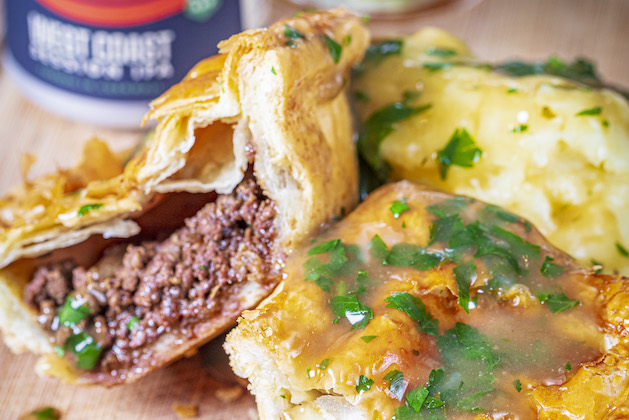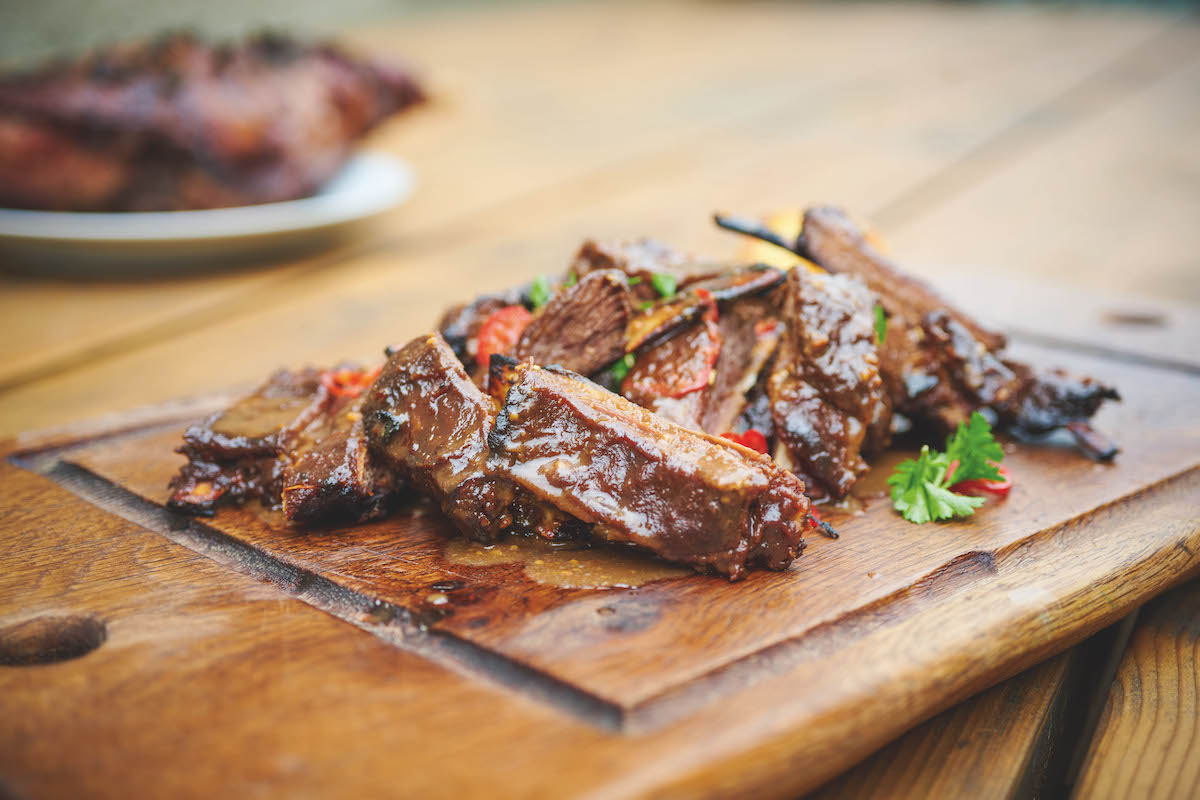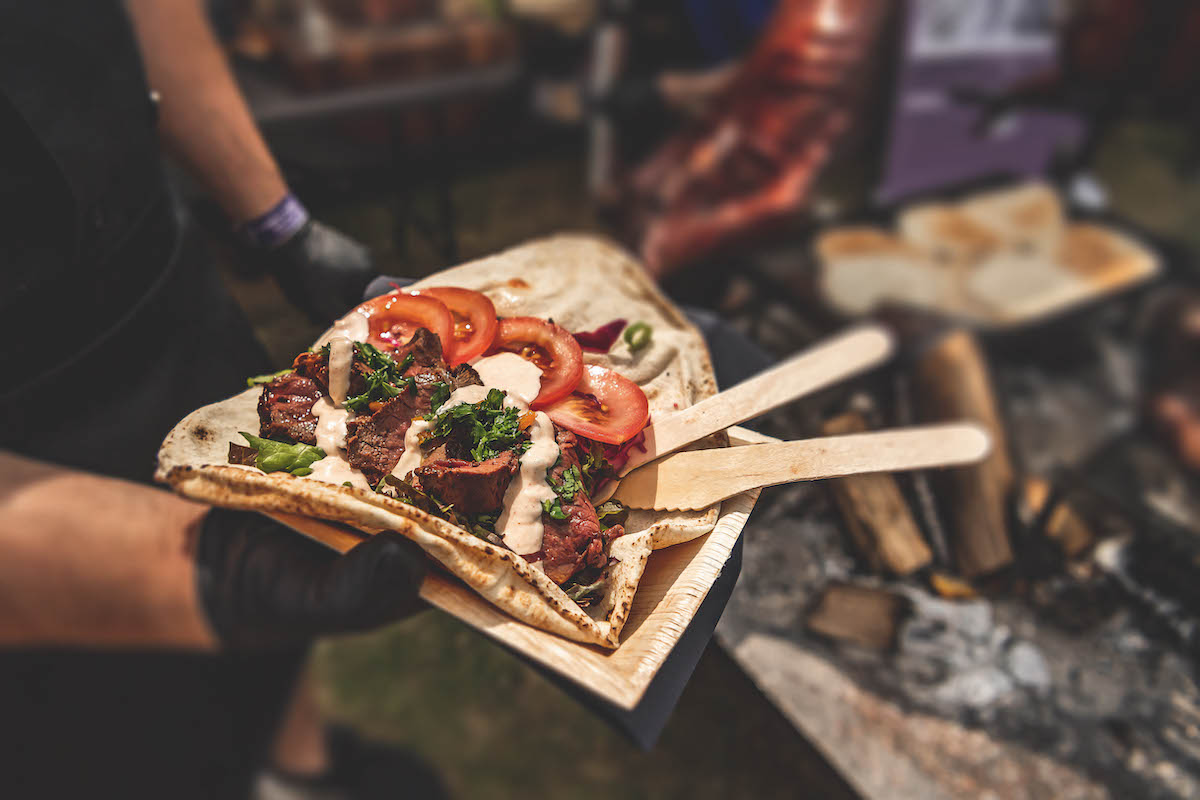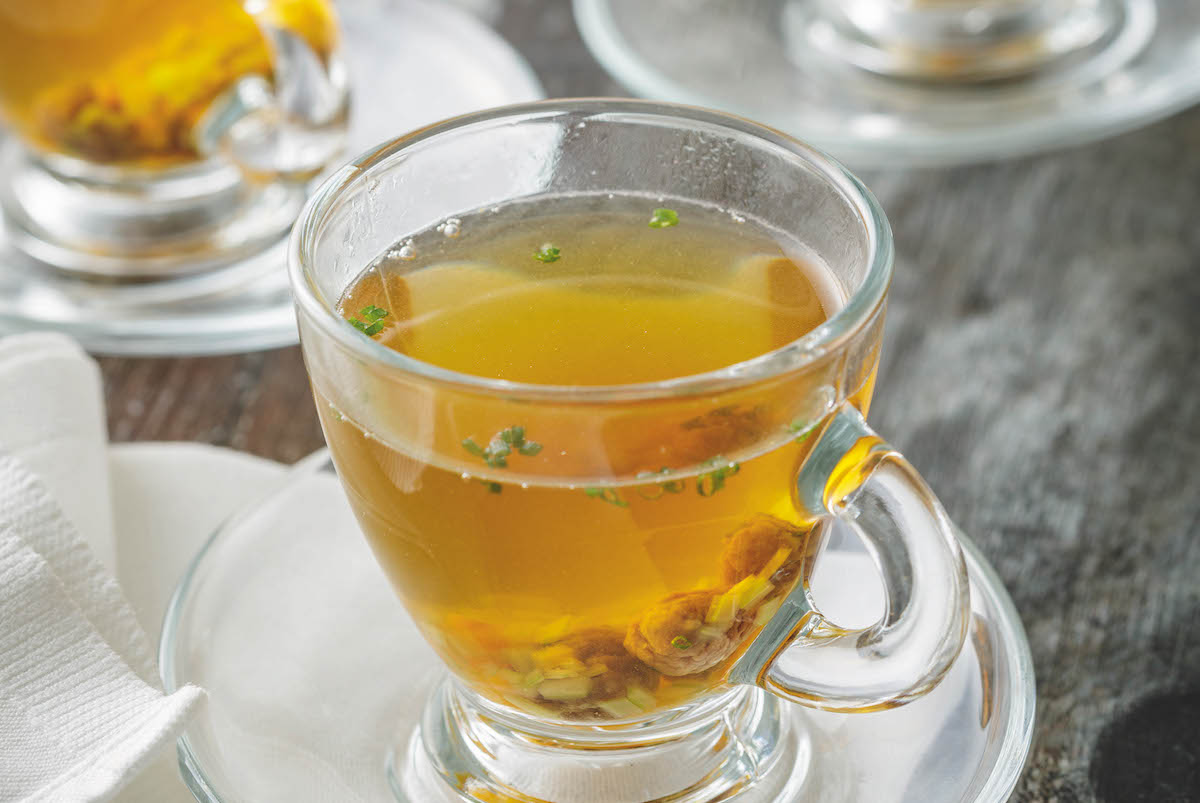Recipe for venison pie with mashed potato
Cai ap Bryn gives a traditional pie and mash recipe a makeover by using minced venison, served with buttery mash and a liquor gravy. Makes 4 to 5 pies.

Venison pie with mash
Pie and mash is historic, so for this recipe for venison pie with mash I have kept to tradition, but swapped the minced beef with venison, which works very well in a delicious suet pastry crust. The pie casing itself traditionally consisted of two different types of pastry – cold water suet for the bottom and shortcrust or puff pastry on the top.
The instructions for the filling in this venison pie with mash are simple and you may wish to jazz it up with extra spices, tomato puree or ale. The hardest part is preparing the pastry. I made my filling in advance and let it cool slightly, before filling the cases with meat. Venison mince is extremely versatile and makes excellent pie fillings, bolognese, chilli or even hand-pressed burgers. (See our recipe for game bolognese here.)
At Game and Flames, we shoot nearly all the venison we use for our clients, but we always have a surplus. Every week, I tend to use venison mince in one form or another and it is a relatively cheap meat to use.
Recipe for venison pie with mash
Ingredients
- 500g venison mince
- 1 medium white onion, finely diced
- 1 tsp Worcestershire sauce
- 500ml rich beef stock
- ½ tsp salt
- ½ tsp pepper
- 1 Tbsp cornflour
- 300g self-raising flour
- 150g suet
- Pinch of salt
- Water
- 450g puff or shortcrust pastry (for the top)
- 3 large white potatoes (maris piper work well)
- 75g butter
- 100ml milk
- Salt and pepper to taste
- 50g butter
- 50g cornflour
- 400ml fish stock
- 25g finely chopped parsley
Method
- Fry the venison mince and onion in a pan until browned.
- Add the Worcestershire sauce, beef stock, salt and pepper. Simmer for 15 minutes.
- Add cornflour in a cup with a splash of cold water and pour into the mince, slowly stirring at the same time. This will thicken the gravy and should set nicely in the pie. If it’s too thick, add a bit more water. Taste the mixture and add more salt if required.
- To make the suet pastry casing, mix the flour and suet together with the salt. You need to add the water slowly until it comes together in a ball that leaves your hands and bowl clean. Once done, remove and knead on a surface dusted with flour until it becomes stretchy. Roll out into 2mm-thick sheets and line your greased pie dishes. Traditionally, these are single rectangular ones, served to each person individually.
- Fill the dishes with mince mixture and cover with the shortcrust or puff pastry. Pinch the edges and, using a knife, poke the top to vent the steam. Brush all over with beaten egg.
- Place the pies in a preheated oven at 180˚C for 25 minutes. Meanwhile, peel and place potatoes in water with a teaspoon of salt, bring to the boil, then simmer for 15 to 20 minutes. Drain, add butter, milk and season to taste. Mash to a smooth consistency.
- Prepare your liquor. Heat the butter in a pan, add the cornflour and stir until it thickens. Slowly add the fish stock, stirring well until you get a thick gravy consistency. If it’s too watery, cook until liquor reduces slightly.
- Add chopped parsley and stir in. Set aside until you are ready to serve. Season with salt and pepper.
- Serve the pies with the mash and liquor, plus a nice pint of ale.
Traditional pie and mash
Living in the south-east of England and being rather close to London, we have an array of different eateries that span a multitude of cultures. A traditional pie and mash shop is among them and, though a dying breed, it provides an excellent meal that warms the soul. Traditionally, the pie and mash is a beef or mutton mince pie served with mashed potato and a liquor. A liquor gravy doesn’t contain alcohol, but a fish-based stock with lots of fresh parsley. The fish stock was often made using the stewed stock from cooked jellied eels.
It was a Victorian working man’s meal that evolved in the East End during the Industrial Revolution. Eel, pie and mash shops were extremely popular and have a firm foothold in the East End’s history.








